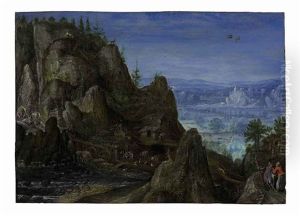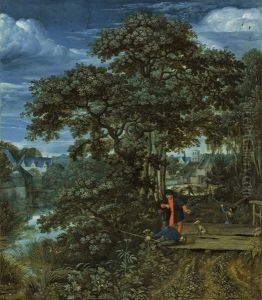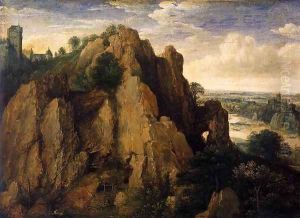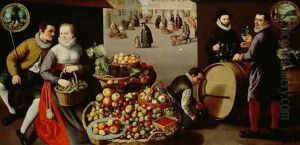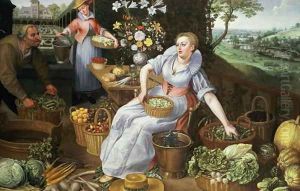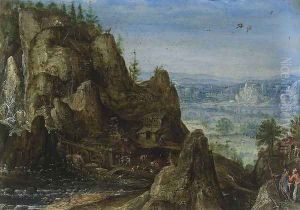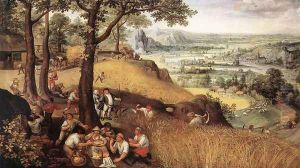Lucas Van Valkenborch Paintings
Lucas van Valkenborch, born in 1535 in Leuven (present-day Belgium), was a Flemish Renaissance painter known for his landscapes, winter scenes, and tower of Babel paintings. He was part of the Northern Renaissance, a period marked by a profound interest in nature, detailed landscapes, and a move towards realism. Lucas came from a family of artists; his brother Marten van Valkenborch was also a painter, suggesting an environment rich in artistic influence and collaboration.
Initially, Lucas' work reflected the influence of Pieter Bruegel the Elder, particularly in the depiction of landscapes and genre scenes filled with life and detail. However, Lucas developed his unique style, focusing on atmospheric perspective and the seasons' changing moods. His landscapes often depicted the countryside of his time, providing a valuable glimpse into the 16th-century rural life in the Low Countries.
In 1586, due to the Spanish Inquisition and the unrest in the Spanish Netherlands, van Valkenborch moved to Germany, where he became a court painter for Rudolf II in Frankfurt and later in Linz. This period was particularly productive for Lucas, as he was commissioned to create works for the nobility and wealthy patrons. His experiences and observations in Germany influenced his art, introducing more architectural elements and urban landscapes.
Lucas van Valkenborch's contribution to art history is significant for his pioneering landscape paintings that combined detailed naturalism with a keen observation of seasonal changes. His work provides an essential link between the landscape traditions of the 16th century and the more evolved, picturesque approaches that would become popular in the 17th century. Lucas passed away in 1597 in Linz, leaving behind a legacy that would influence generations of landscape artists in Europe.





















